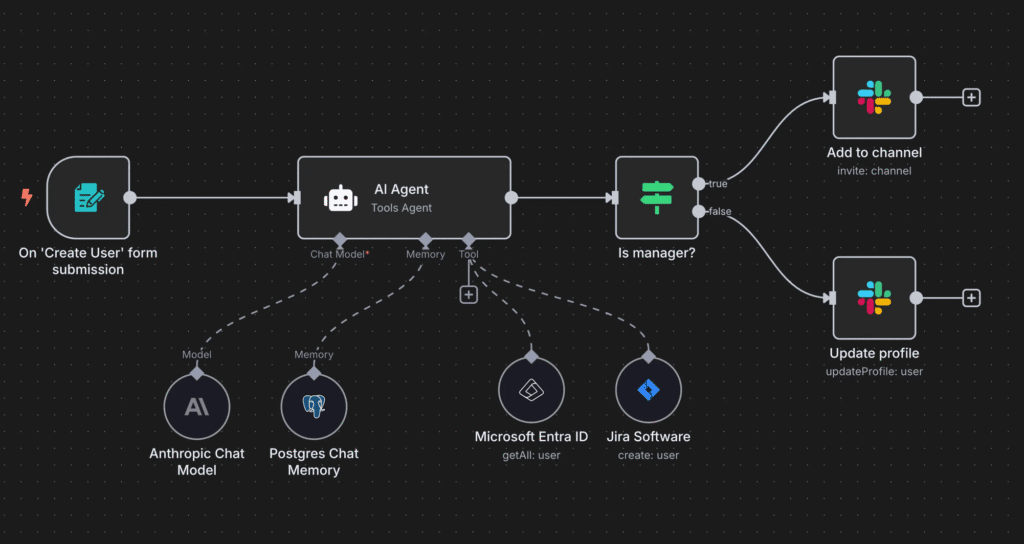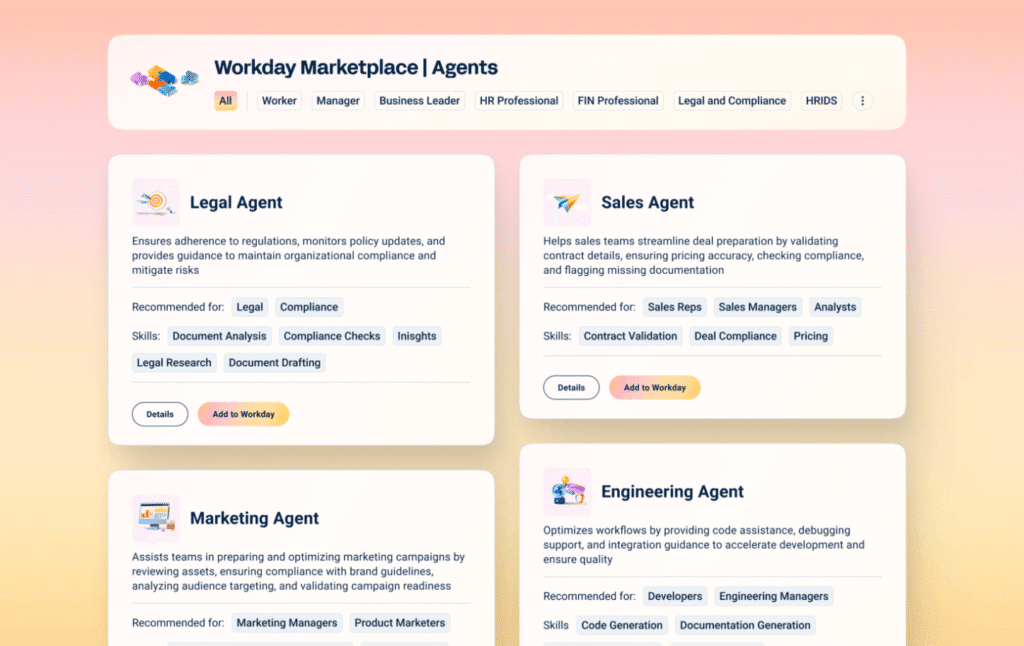For years, Robotic Process Automation (RPA) has been the darling of efficiency, a tireless digital workforce automating repetitive, rule-based tasks across enterprises. From streamlining employee onboarding in HCM to accelerating supplier invoice processing in Finance, RPA has been instrumental in unlocking significant gains. But a new paradigm is emerging, one that promises to take automation to an entirely new level: Agentic AI. While RPA remains valuable for its specific strengths, the future of complex, adaptable automation lies increasingly with these intelligent, autonomous agents.
From Rigid Bots to Intelligent Agents: The RPA to Agentic AI Shift
RPA’s strength lies in its predictability. It meticulously follows predefined steps, mimicking human interactions with software applications. This has been a godsend for high-volume, low-complexity transactions in many departments from Marketing, Operations, Human Resources and Finance: Automated data entry via screen capture, scheduled report generation and distribution, or basic reconciliation. The benefits—reduced errors, increased speed, and improved compliance—are undeniable. However, RPA’s rigidity is also its Achilles’ heel. Any deviation from the prescribed path, any unstructured data, or any process requiring genuine judgment brings the RPA bot to a halt, demanding human intervention. The oversight of RPA and error correction in many cases undermined the actual return on investment.
Enter Agentic AI. This isn’t just a smarter bot; it is a fundamental shift in how automation operates. These new systems are designed to understand context, make decisions, and execute multi-step actions to achieve a specific goal, often with minimal human oversight. They leverage advanced AI capabilities like large language models (LLMs), machine learning, and natural language processing to reason, plan, and adapt dynamically. This inherent intelligence simplifies the creation and maintenance of automations dramatically. Instead of meticulously mapping every possible scenario and coding complex rules, Agentic AI can be given high-level objectives in natural language. The agent then perceives its environment, analyzes data, formulates a strategy, and executes the necessary steps, even adjusting its approach if unexpected variables arise. This contrasts sharply with RPA, where changes to underlying systems or processes often necessitate significant reprogramming and maintenance.
Here are some use cases illustrating the difference:
RPA Use Cases (Rule-Based & Repetitive):
- Payroll Processing: Automating data entry from timesheets into a payroll system with field mapping and validation rules.
- Supplier Invoice Processing: Extracting data from structured invoices and entering it into an ERP system.
- Customer Onboarding: Automatically populating new customer profiles in a CRM based on a standardized form.
- Report Generation: Scheduling and executing pre-defined report exports from various systems.
- Data Migration: Moving data between legacy systems and new platforms following strict rules.
Agentic AI Use Cases (Intelligent & Adaptive):
- Dynamic Employee Onboarding: An Agentic AI system could not only create an employee profile but also identify necessary training based on role, provision access to relevant systems, and send personalized welcome messages, adapting to individual needs and company policy changes.
- Intelligent Financial Reconciliation: Beyond simply matching transactions, an Agentic AI could identify discrepancies, research potential causes (e.g., contacting vendors for missing invoices), and suggest corrective journal entries, escalating only truly ambiguous cases.
- Personalized Customer Service Automation: An Agentic AI chatbot could not only answer FAQs but also understand more complex customer queries, access multiple systems to retrieve relevant information, and even offer tailored solutions or proactively suggest products based on past interactions and purchase history.
- Compliance Monitoring & Risk Assessment: An Agentic AI could continuously monitor transactions and communications for compliance with regulatory requirements, identify potentially fraudulent activities, and generate detailed audit trails, learning from new regulations and emerging threats.
Democratizing Automation: Less Technical Knowledge, More Power
One of the most compelling aspects of Agentic AI is that it requires less technical knowledge to implement and manage. While building the connections and supplying clean data for these agents requires specialized IT expertise and system knowledge, their deployment and ongoing orchestration can be handled by business users with a more intuitive, goal-oriented interface. This takes the time to develop agents from weeks down to hours. It democratizes automation, allowing a wider range of employees to contribute to efficiency initiatives without needing to be proficient in coding or complex scripting.

The shift is not theoretical; it is already happening. Current offerings like Make.com and n8n, often categorized as integration platforms with advanced automation capabilities, are already incorporating elements of Agentic AI. They enable users to build sophisticated workflows that react intelligently to events, process unstructured data, and connect disparate systems in ways that go beyond traditional RPA. While they may not be fully autonomous yet, they demonstrate the principles of agentic behavior: understanding intent, adapting to change, and executing multi-step processes.
The Role of Workday Agentic AI and how AMS Services can help
Looking ahead, major enterprise software providers are recognizing this trend and integrating Agentic AI directly into their platforms. Salesforce is advertising their Agentforce. Workday’s Agentic AI will leverage similar patterns, enabling intelligent automation within their ecosystem. Imagine an AI agent embedded directly in Workday that can not only process an employee’s expense report but also flag unusual spending patterns, proactively query missing receipts, and even initiate approval workflows based on company policy, without explicit pre-programmed rules for every single exception. Customers will have a choice to use the native Agentic Ai or supplement with other vendor offerings.

This evolution will also redefine the role of Workday Application Management Services (AMS). Historically, Workday AMS services have focused on maintaining the core Workday platform, managing integrations, and providing support for configurations and updates. With the rise of Agentic AI, AMS teams will increasingly shift their focus from purely reactive support to proactive optimization and strategic enablement. With their experience from customer implementations and their domain knowledge, they can provide a strategy, accelerate deployments, and increase the operational confidence of agents.
This will involve understanding how Agentic AI can be best applied to Workday processes, assisting in the design and deployment of these intelligent automations, and then monitoring their performance and fine-tuning their capabilities. Workday AMS providers will become crucial partners in maximizing the value of Workday’s Agentic AI offerings, ensuring seamless integration, optimal performance, and continuous improvement of these advanced automations.
Conclusion
Agentic AI is not simply replacing RPA; it is evolving it. RPA laid the groundwork for process automation, demonstrating its immense value. Now, Agentic AI is building upon that foundation, adding the crucial elements of intelligence, adaptability, and autonomy. This empowers organizations to automate more complex, nuanced, and dynamic processes, ultimately leading to even greater efficiency, cost savings, and a more responsive, intelligent enterprise. The quiet revolution of Agentic AI is here, and it is set to redefine the landscape of business automation.


